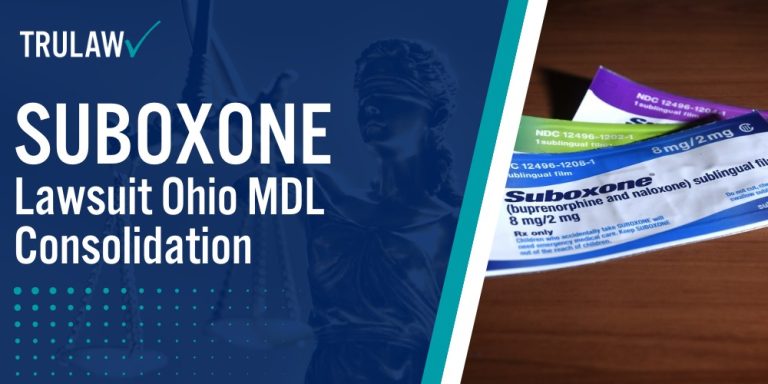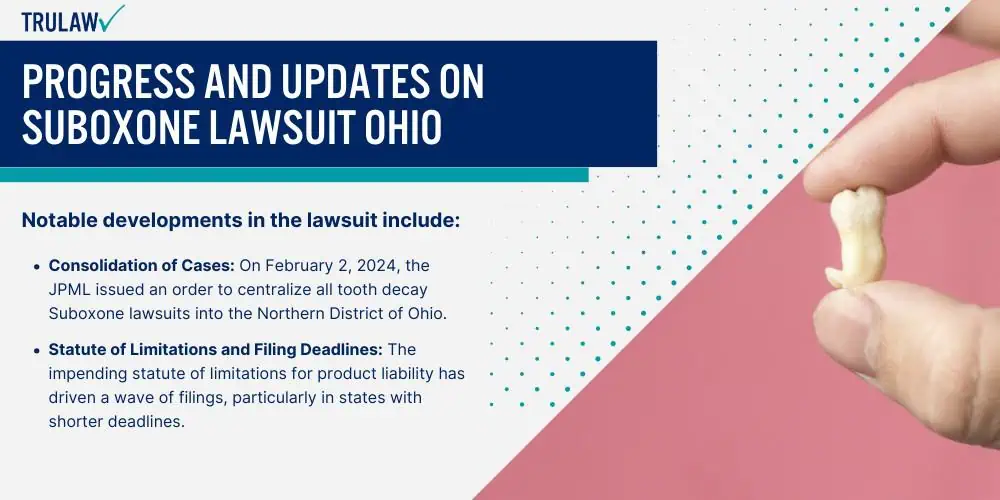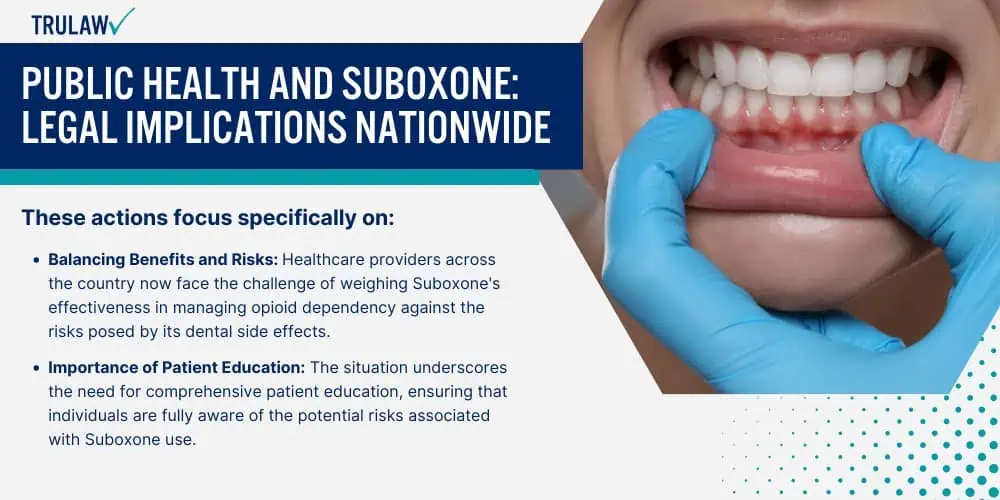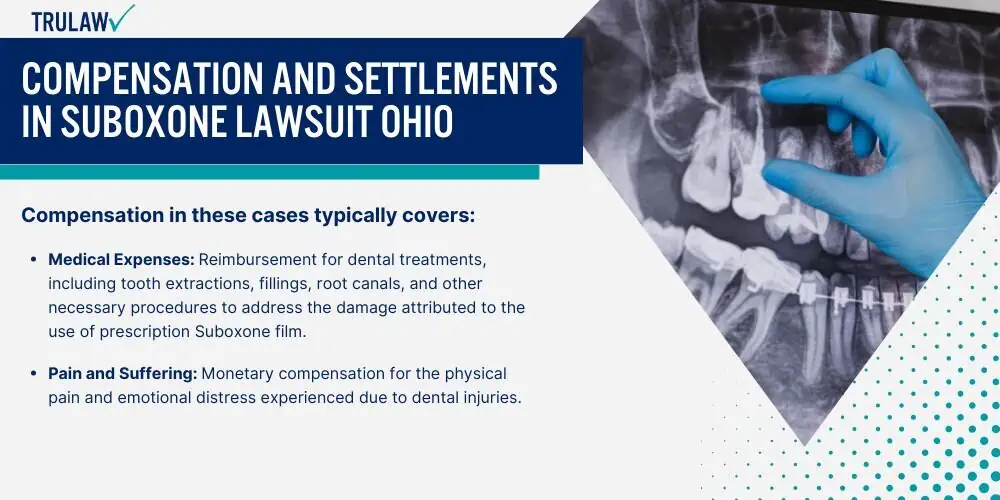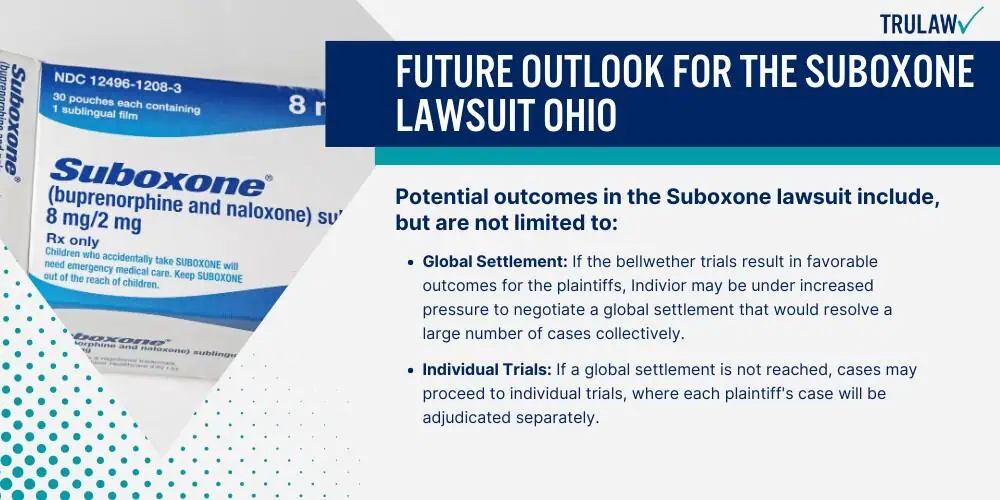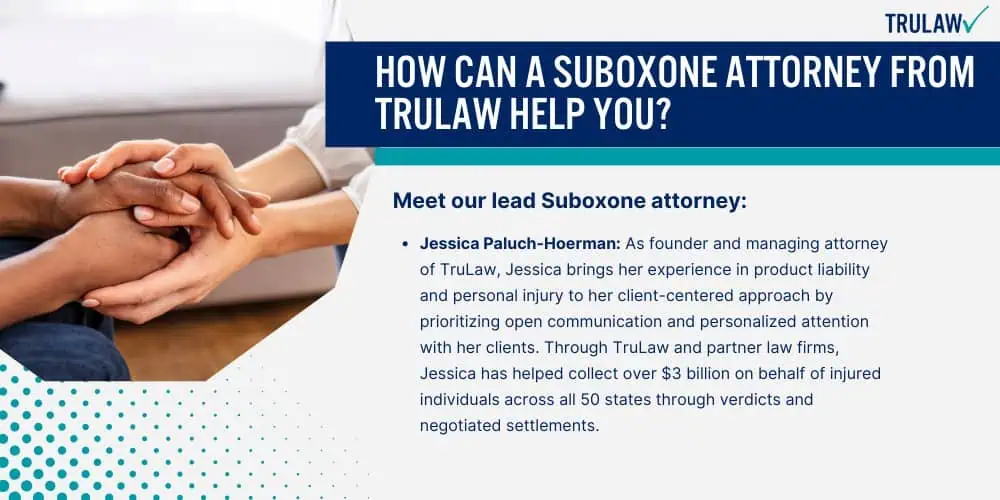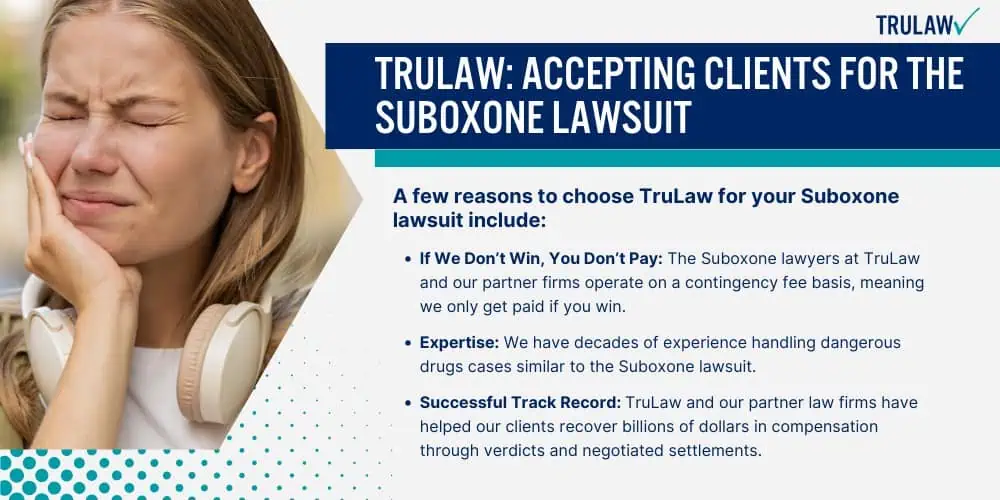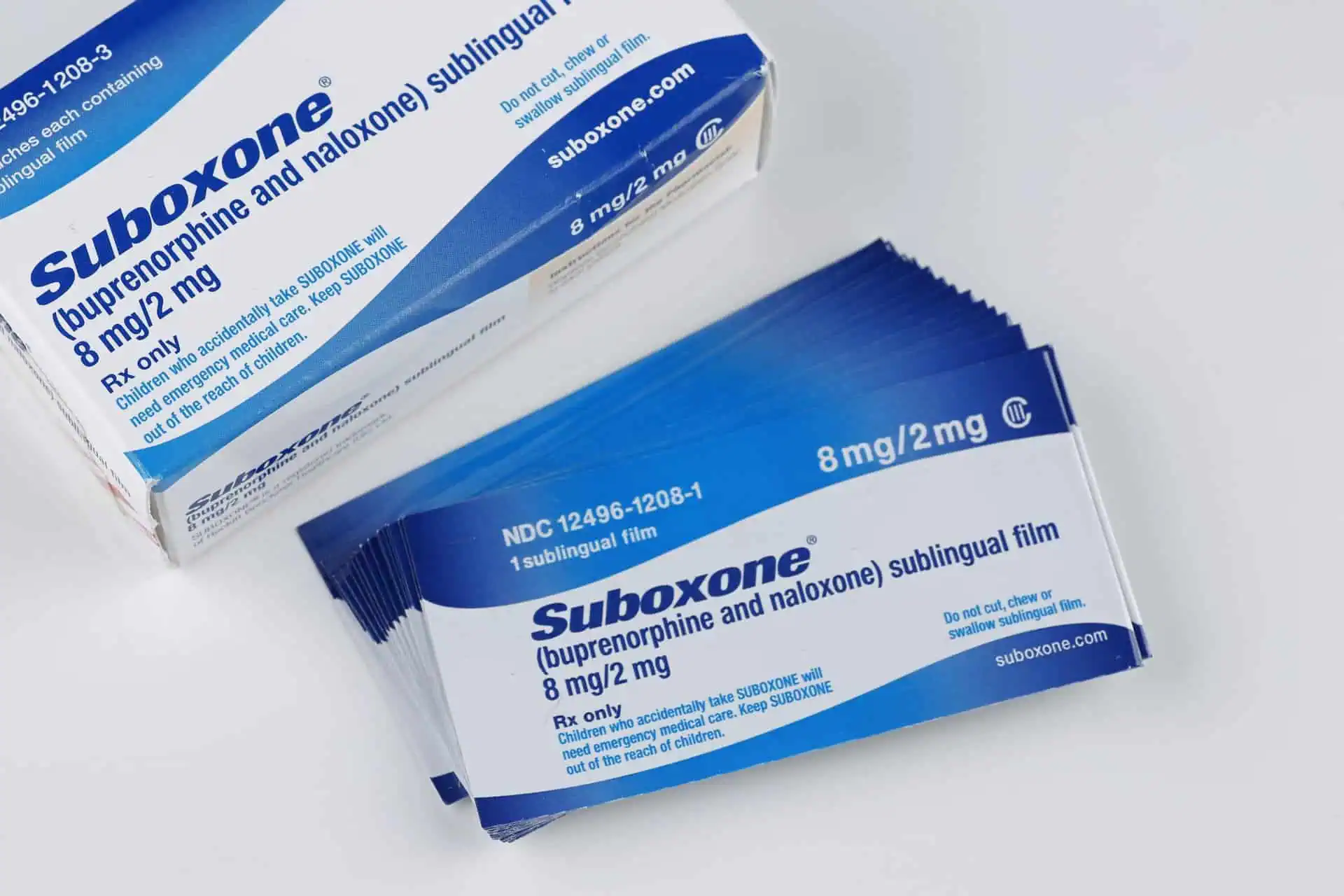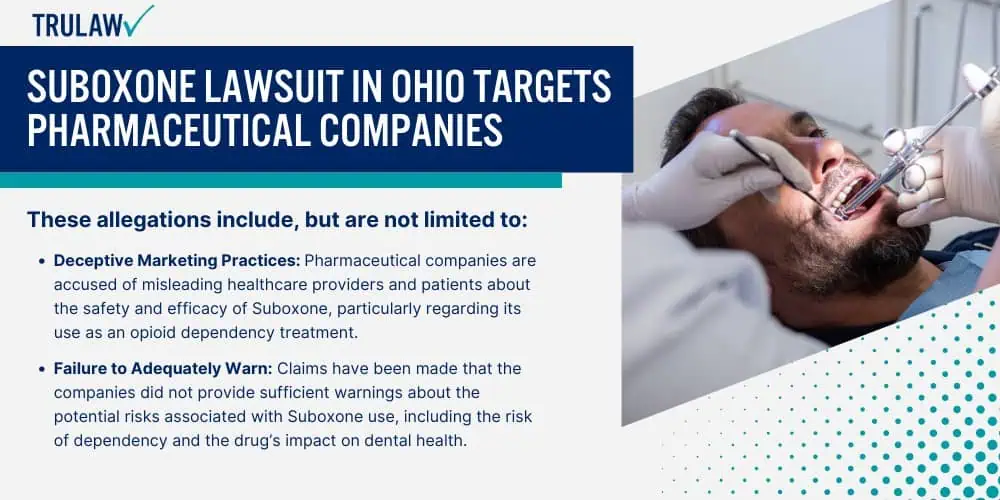
The Suboxone lawsuit in Ohio represents a major legal battle against prominent pharmaceutical companies accused of deceptive marketing and monopolistic practices.
Ohio has become a central focus in the national effort to hold Suboxone manufacturers accountable for their role in the opioid crisis.
Allegations Against Suboxone Manufacturers
The core of the Suboxone lawsuit in Ohio involves several allegations against the manufacturers.
These claims highlight how pharmaceutical companies allegedly prioritized profits over patient safety.
The lawsuit aims to expose and rectify the practices that have contributed to widespread harm across the state.
These allegations include, but are not limited to:
- Deceptive Marketing Practices: Pharmaceutical companies are accused of misleading healthcare providers and patients about the safety and efficacy of Suboxone, particularly regarding its use as an opioid dependency treatment.
- Failure to Adequately Warn: Claims have been made that the companies did not provide sufficient warnings about the potential risks associated with Suboxone use, including the risk of dependency and the drug’s impact on dental health.
- Suboxone Tooth Decay: The FDA claims that Suboxone manufacturers failed to disclose the risks of severe dental decay associated with prolonged use of the medication, leading to significant dental issues for many patients across Ohio.
These allegations form the foundation of the legal action taken against the manufacturers, highlighting the extent of their alleged involvement in unethical practices that have worsened the opioid crisis nationwide.
